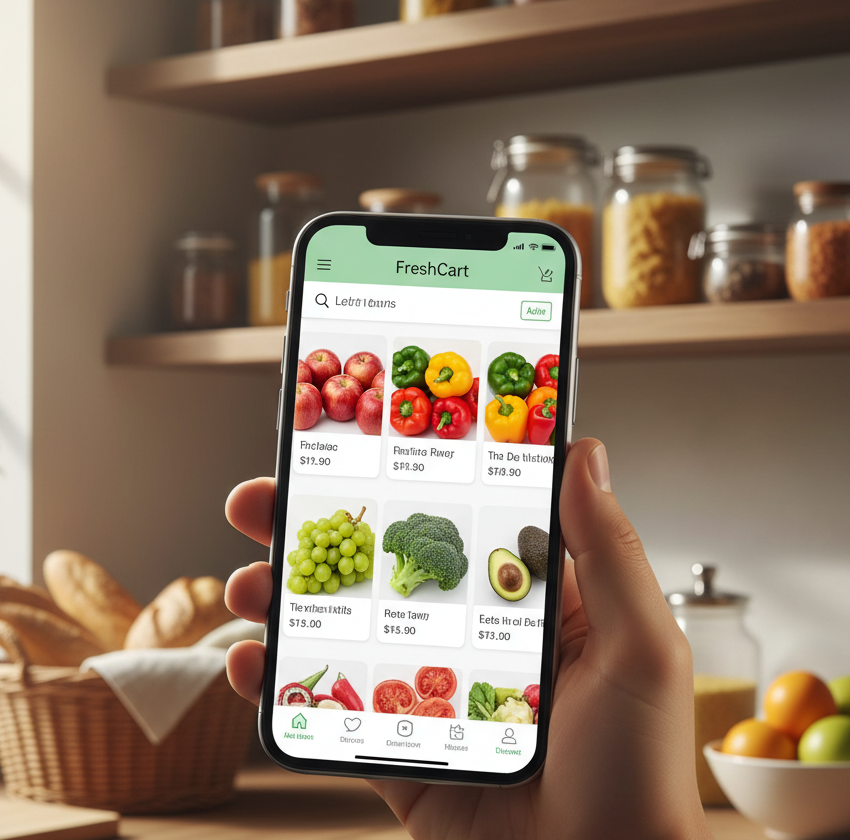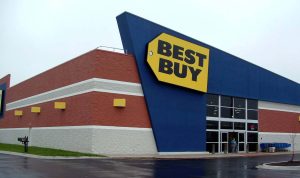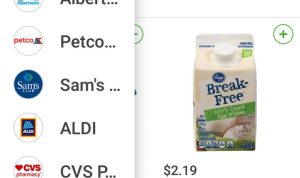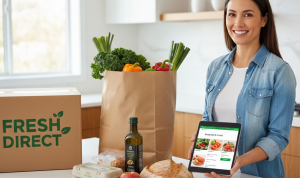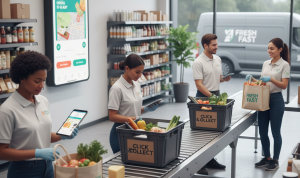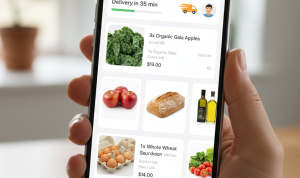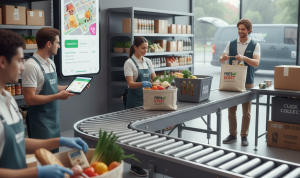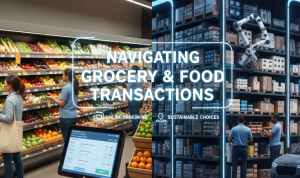The way we buy groceries and food has undergone a significant transformation. From traditional brick-and-mortar stores to the rise of e-commerce, the groceries & food transactions landscape is more dynamic and consumer-centric than ever before. This article explores the key trends, challenges, and innovations shaping this vital sector of the economy.
From Traditional Markets to Digital Marketplaces
For centuries, grocery shopping was a tactile experience. It involved visiting local markets, inspecting produce, and interacting with vendors. This model, while rich in personal connection, often came with limitations in terms of convenience and variety. The advent of supermarkets in the 20th century streamlined this process, offering a one-stop-shop for a wide array of products.
However, the real paradigm shift began with the internet. E-commerce platforms like Amazon Fresh, Instacart, and countless others have revolutionized how we fill our pantries. Consumers can now browse thousands of products from the comfort of their homes, compare prices, read reviews, and schedule deliveries at their convenience. This has not only made shopping more efficient but has also opened up new avenues for small businesses and local producers to reach a wider audience.
Key Drivers of Change
Several factors are fueling the rapid evolution of groceries & food transactions.
- Convenience and Time-Saving: In today’s fast-paced world, time is a precious commodity. Online grocery shopping and meal kit services eliminate the need to travel to a store, navigate aisles, and wait in checkout lines. This convenience is a primary driver for many consumers, especially busy professionals and families.
- Technological Advancements: The integration of technology has been crucial. Mobile apps, AI-powered recommendation engines, and advanced logistics systems ensure a seamless shopping experience. Consumers can track their orders in real-time, receive personalized offers, and even use smart devices to create shopping lists.
- Changing Consumer Habits: The pandemic accelerated the adoption of online grocery shopping. As people became more comfortable with digital transactions, the trend continued even after restrictions were lifted. Furthermore, there’s a growing demand for specialized products, such as organic, gluten-free, or plant-based foods, which are often easier to find on dedicated online platforms.
- The Rise of “Quick Commerce”: The demand for instant gratification has led to the emergence of “quick commerce” or “q-commerce.” Services like GoPuff and similar platforms promise delivery within minutes, catering to impulse purchases and immediate needs. This model relies on a dense network of “dark stores” or micro-fulfillment centers, strategically located to minimize delivery times.
Challenges and Solutions
Despite the immense growth, the groceries & food transactions sector faces unique challenges.
- Logistics and Supply Chain: Ensuring the freshness and quality of perishable goods during transit is a major hurdle. Maintaining a cold chain from the warehouse to the consumer’s doorstep requires sophisticated and expensive infrastructure. Companies are investing in temperature-controlled packaging and specialized delivery fleets to address this.
- Profit Margins: Grocery retail is known for its razor-thin profit margins. The added costs of picking, packing, and delivering orders can make it difficult for companies to be profitable, especially in a highly competitive market. Businesses are exploring automation, dynamic pricing, and subscription models to improve their financial viability.
- Consumer Trust: Trust is paramount, particularly when it comes to the quality of fresh produce. Customers may be hesitant to let someone else select their fruits or vegetables. To build trust, companies are implementing quality control measures, offering easy return policies, and allowing customers to leave detailed reviews.
- Last-Mile Delivery: The final step of the delivery process, known as the “last mile,” is often the most challenging and expensive. Traffic, difficult-to-access buildings, and fluctuating demand all contribute to this complexity. Companies are experimenting with innovative solutions like drone deliveries, autonomous vehicles, and bike couriers to optimize this final leg.
The Future of Groceries & Food Transactions
The future of groceries & food transactions will likely be a hybrid model. Physical stores will not disappear; instead, they will transform into “experience centers” where customers can discover new products, attend cooking classes, or simply enjoy the ambiance. These stores will also serve as crucial micro-fulfillment centers for online orders.
Meanwhile, technology will continue to play an increasingly important role. We can expect to see more personalized shopping experiences driven by AI, with recommendations based on dietary needs, past purchases, and even health data. The use of blockchain technology could also become more widespread, providing greater transparency about the origin and journey of our food, from farm to table.
The integration of sustainable practices will also be a key focus. Consumers are becoming more conscious of the environmental impact of their food choices. Companies that prioritize ethical sourcing, reduce food waste, and use eco-friendly packaging will gain a significant competitive advantage.
In conclusion, the groceries & food transactions sector is at a crossroads. While the traditional model still holds its own, the digital revolution has irrevocably changed consumer expectations. The companies that succeed will be those that can seamlessly blend technology with a focus on quality, convenience, and sustainability, creating a future where our food is just a click away.

